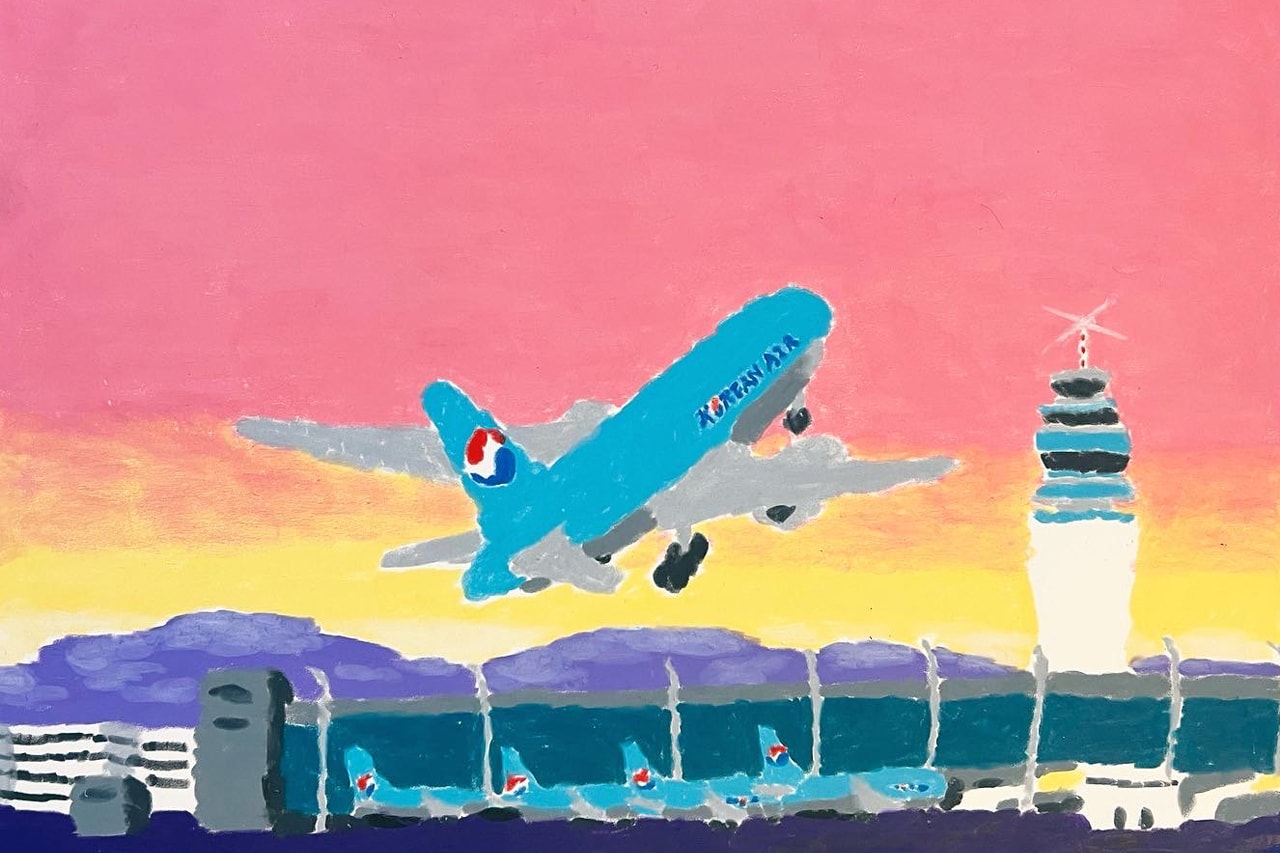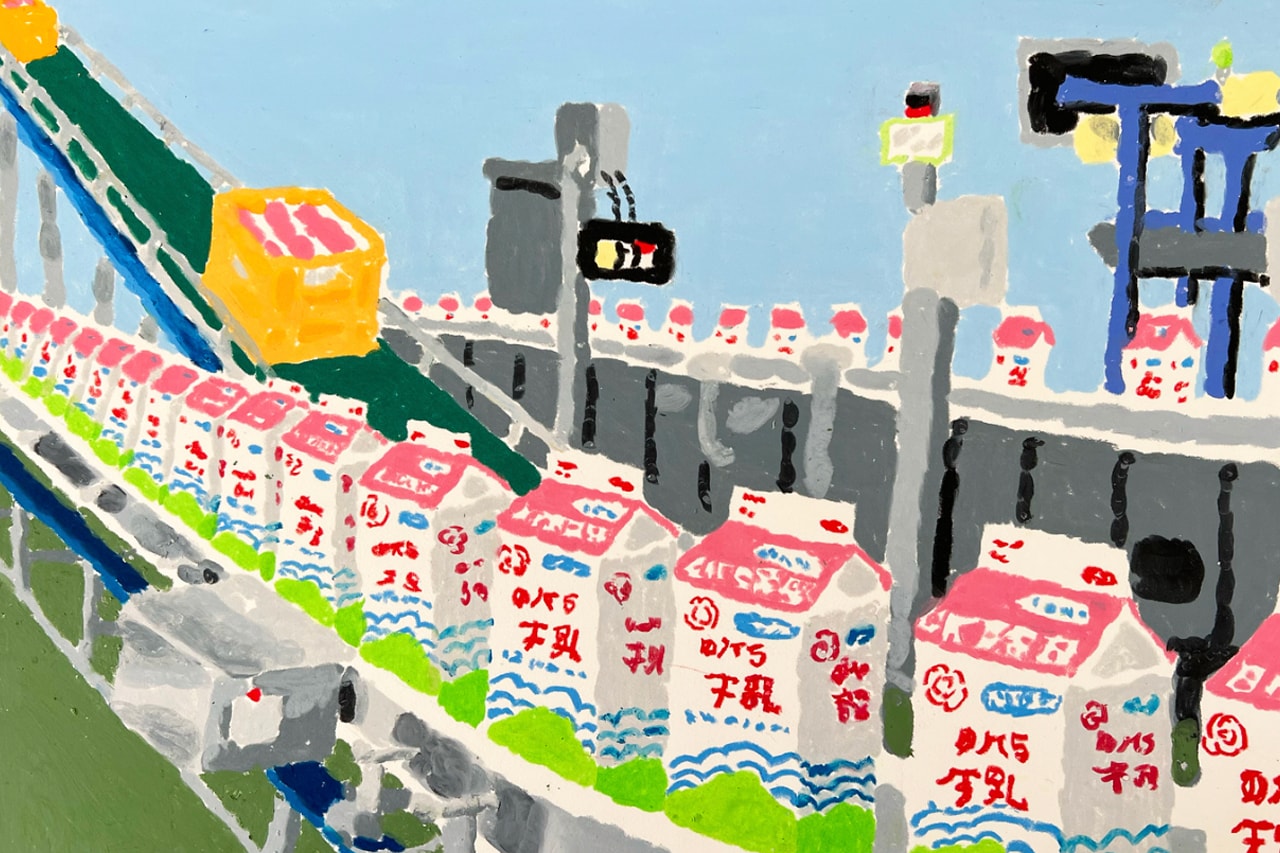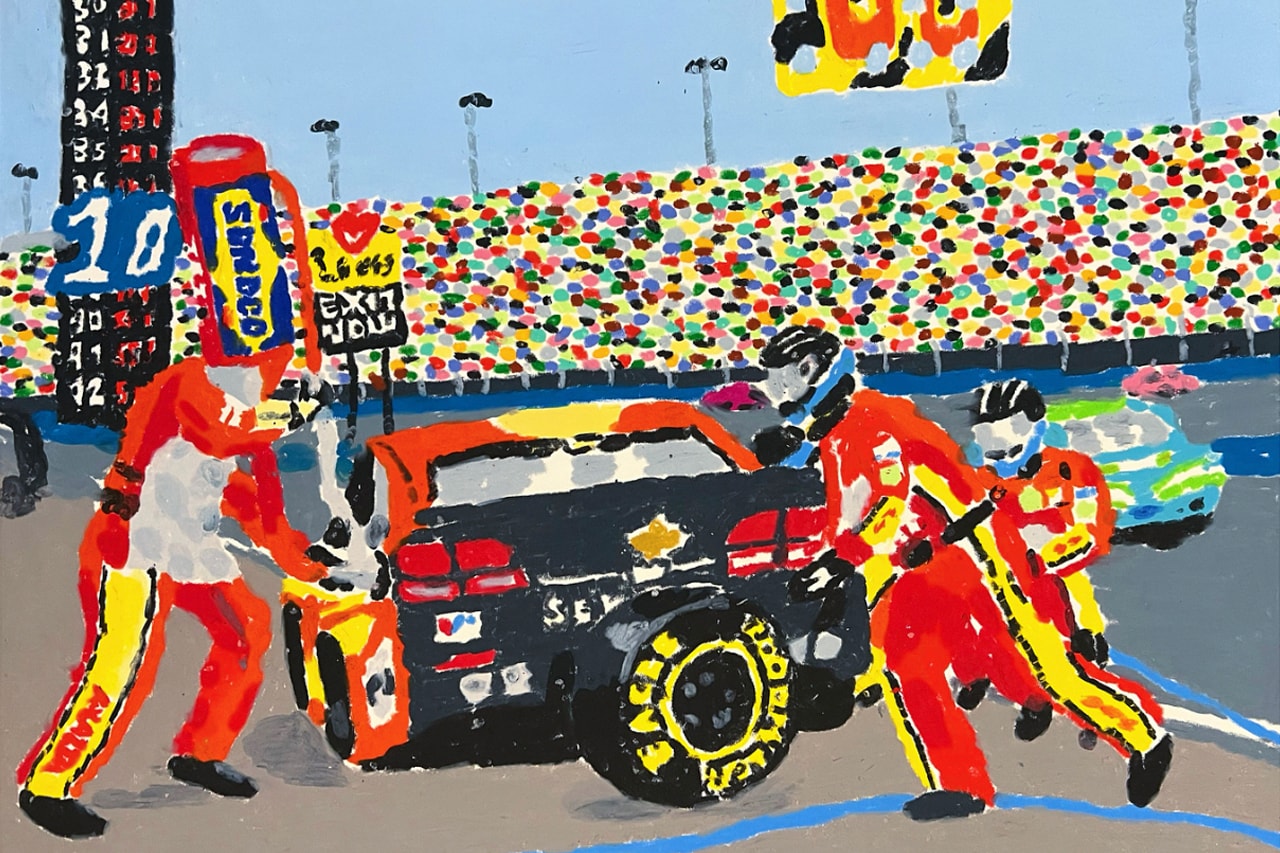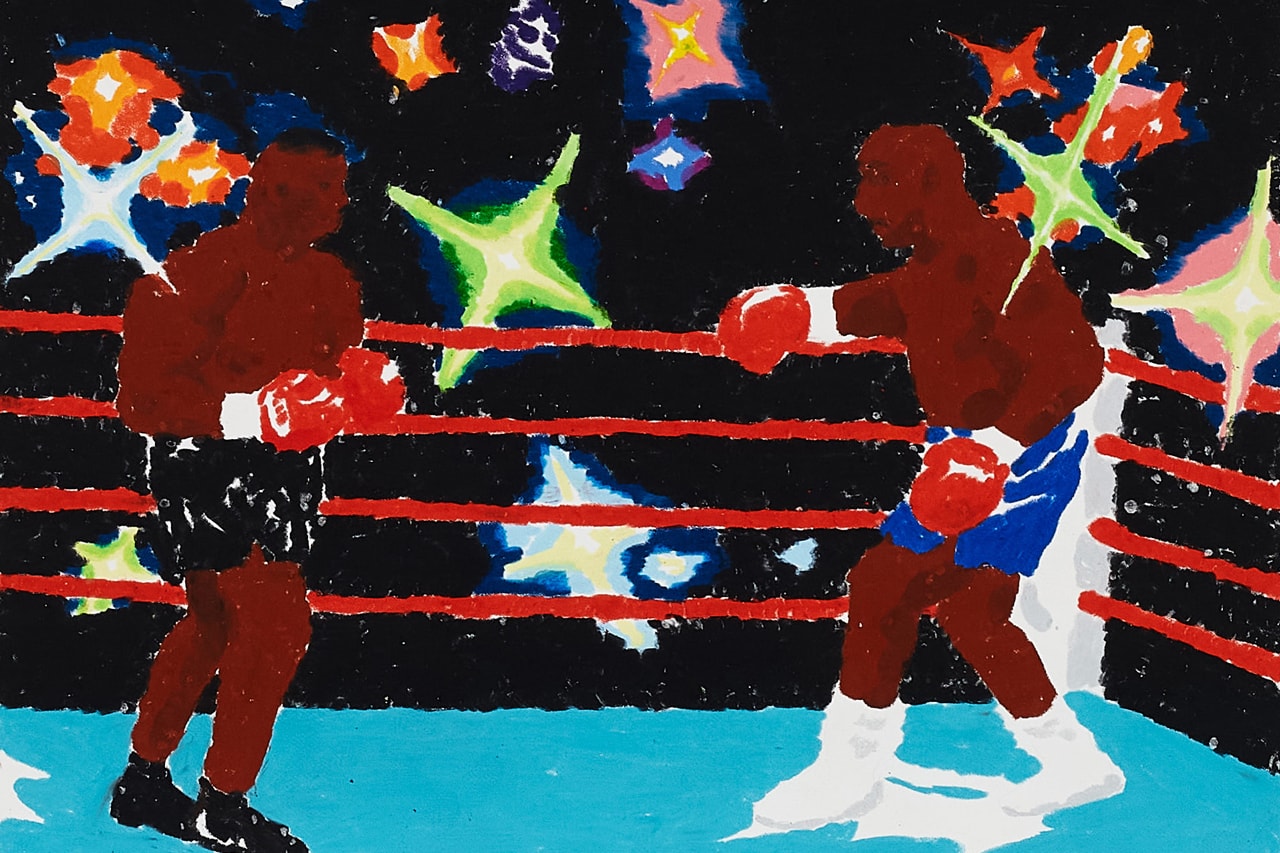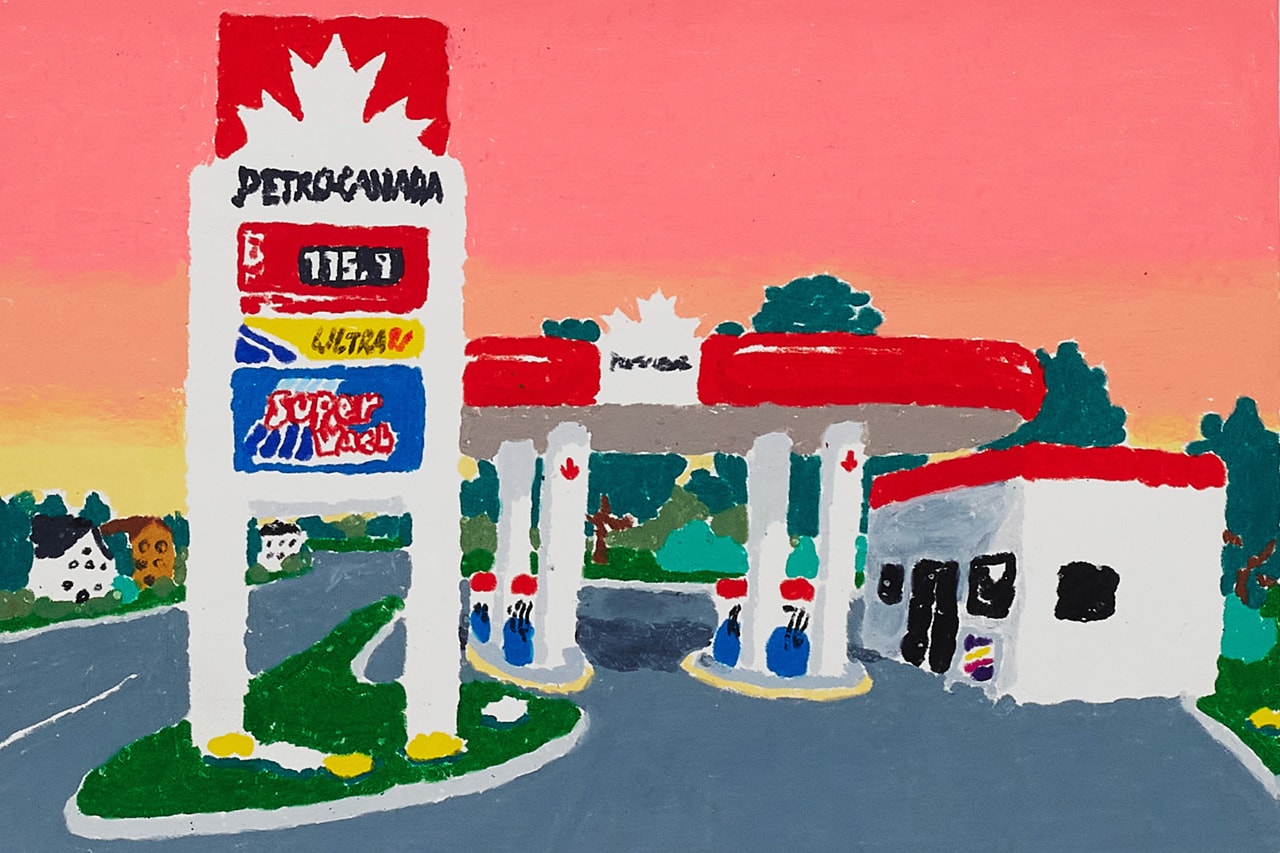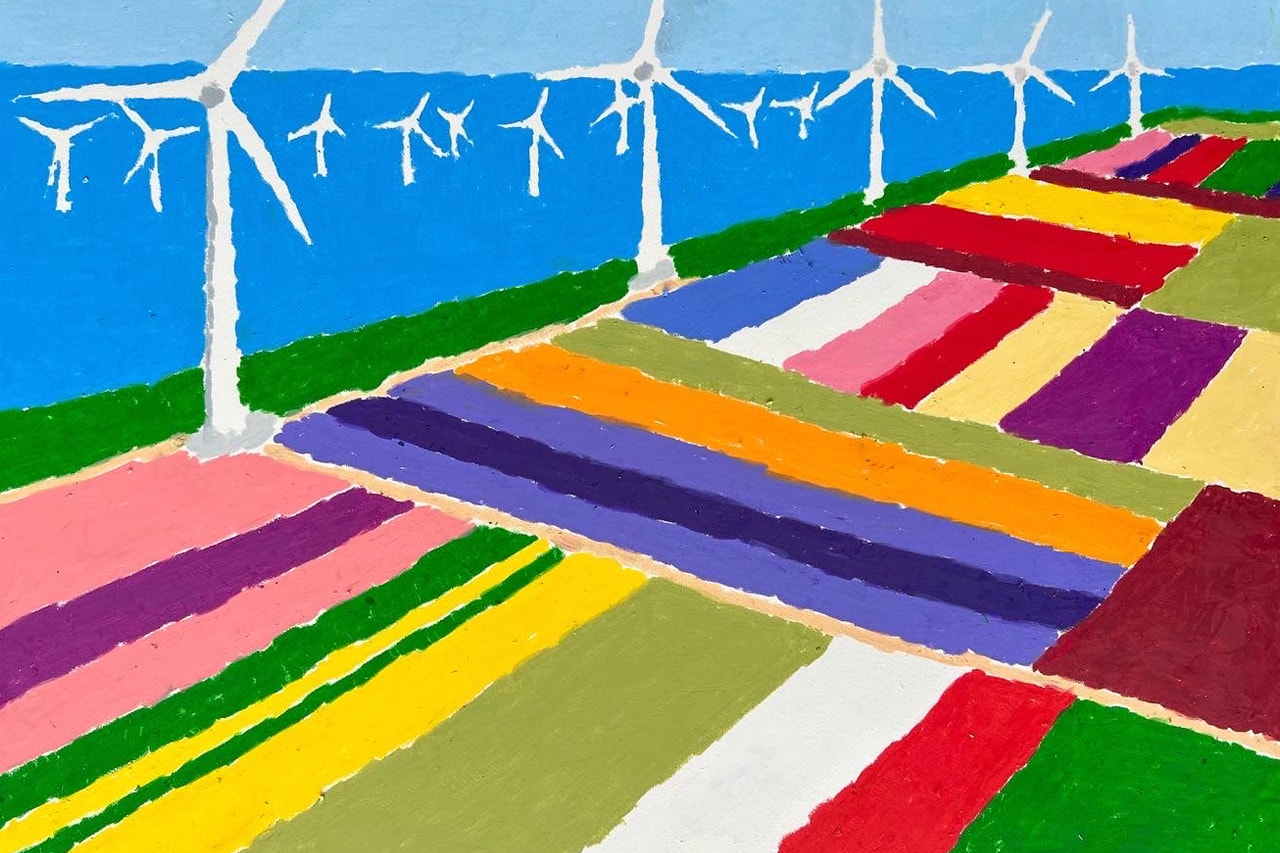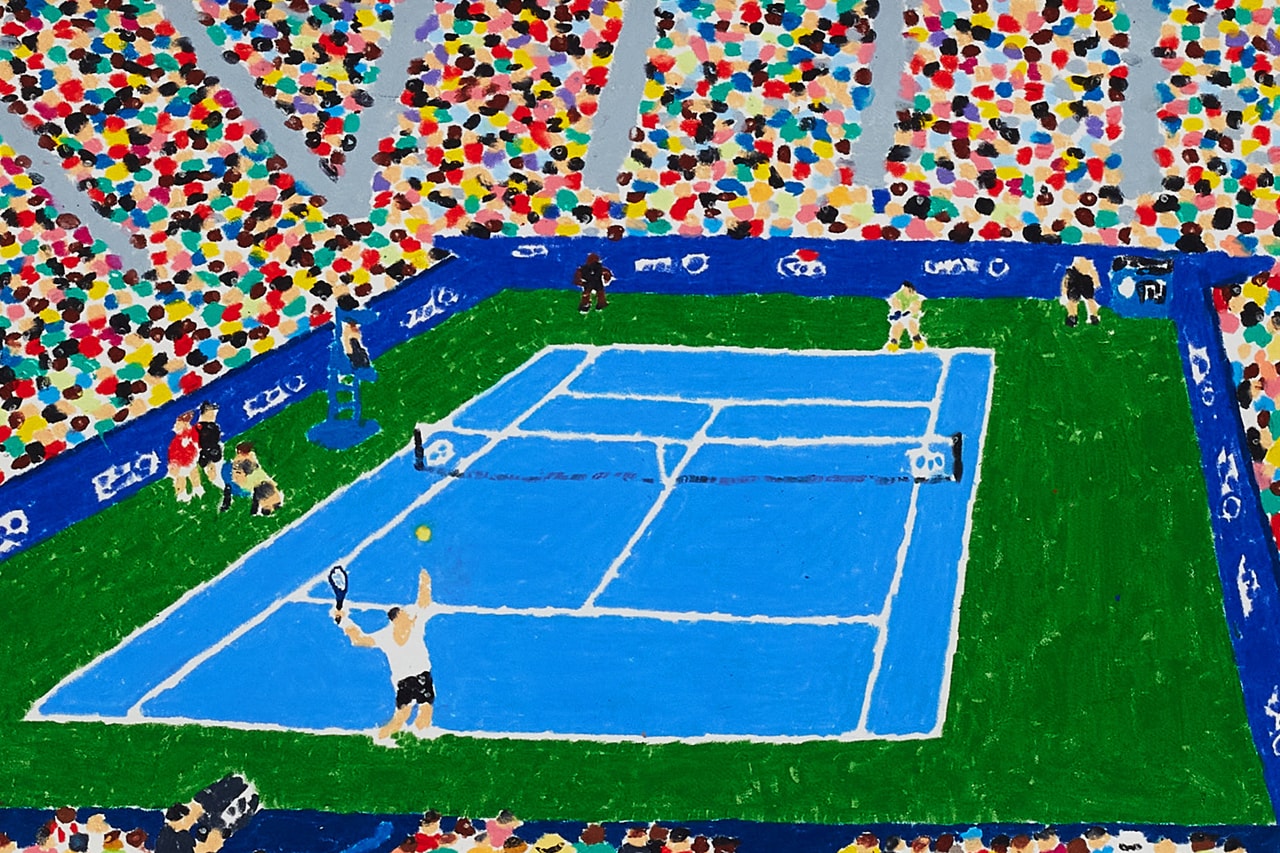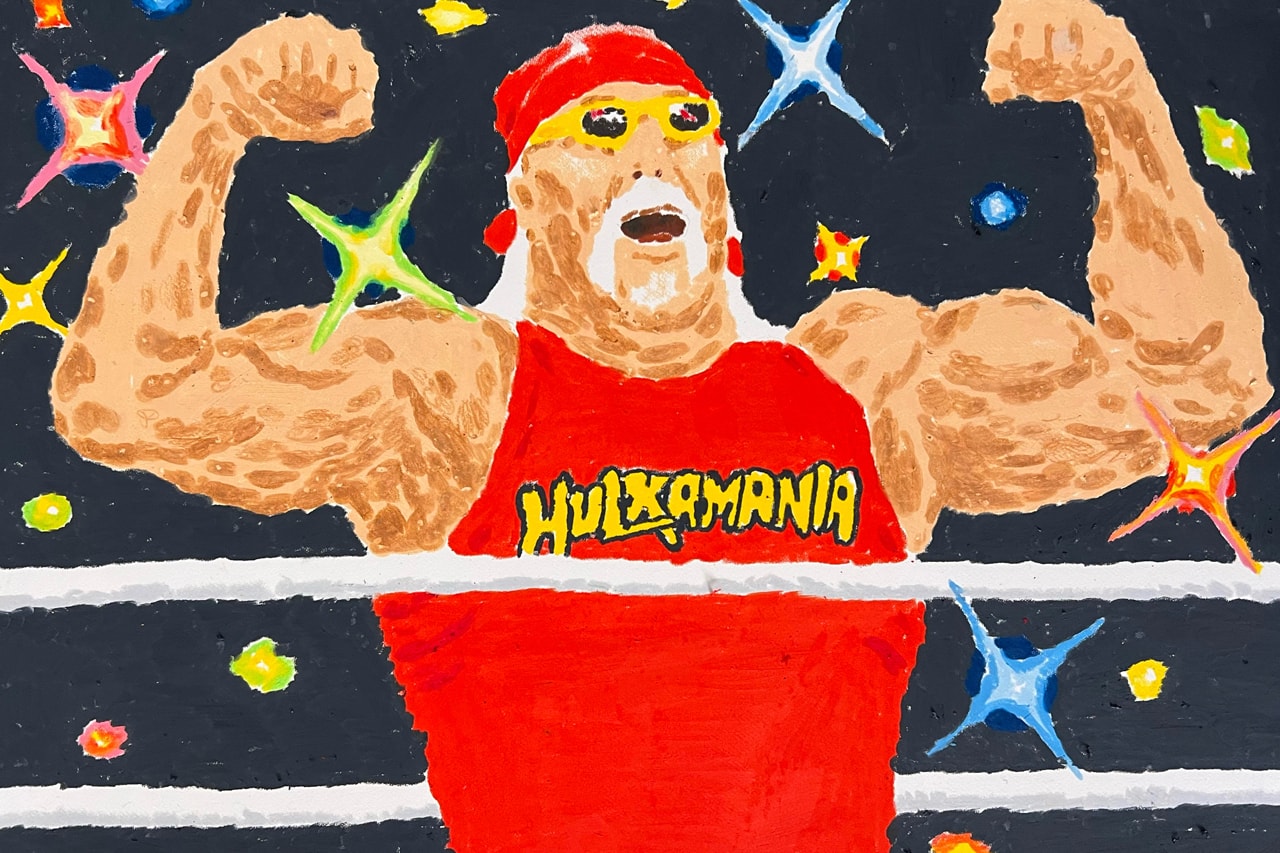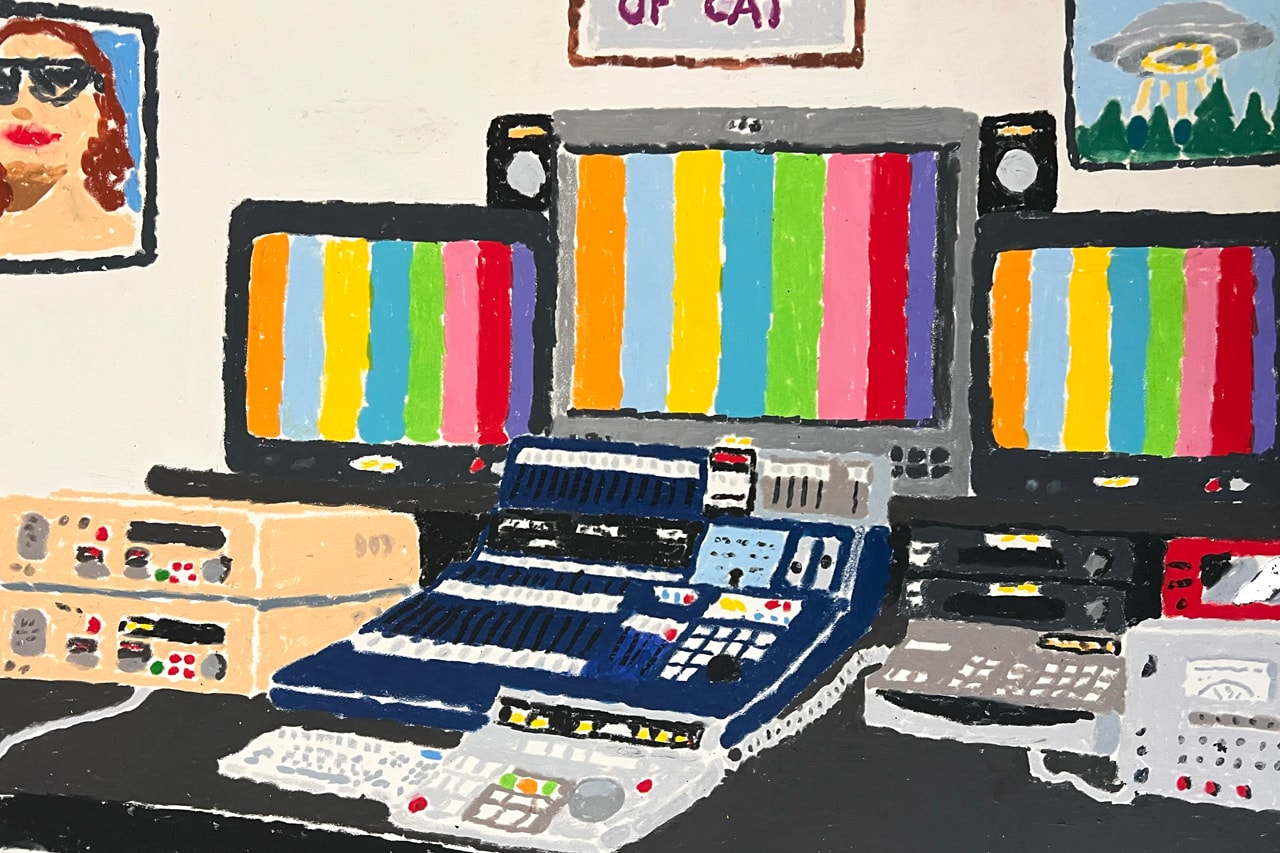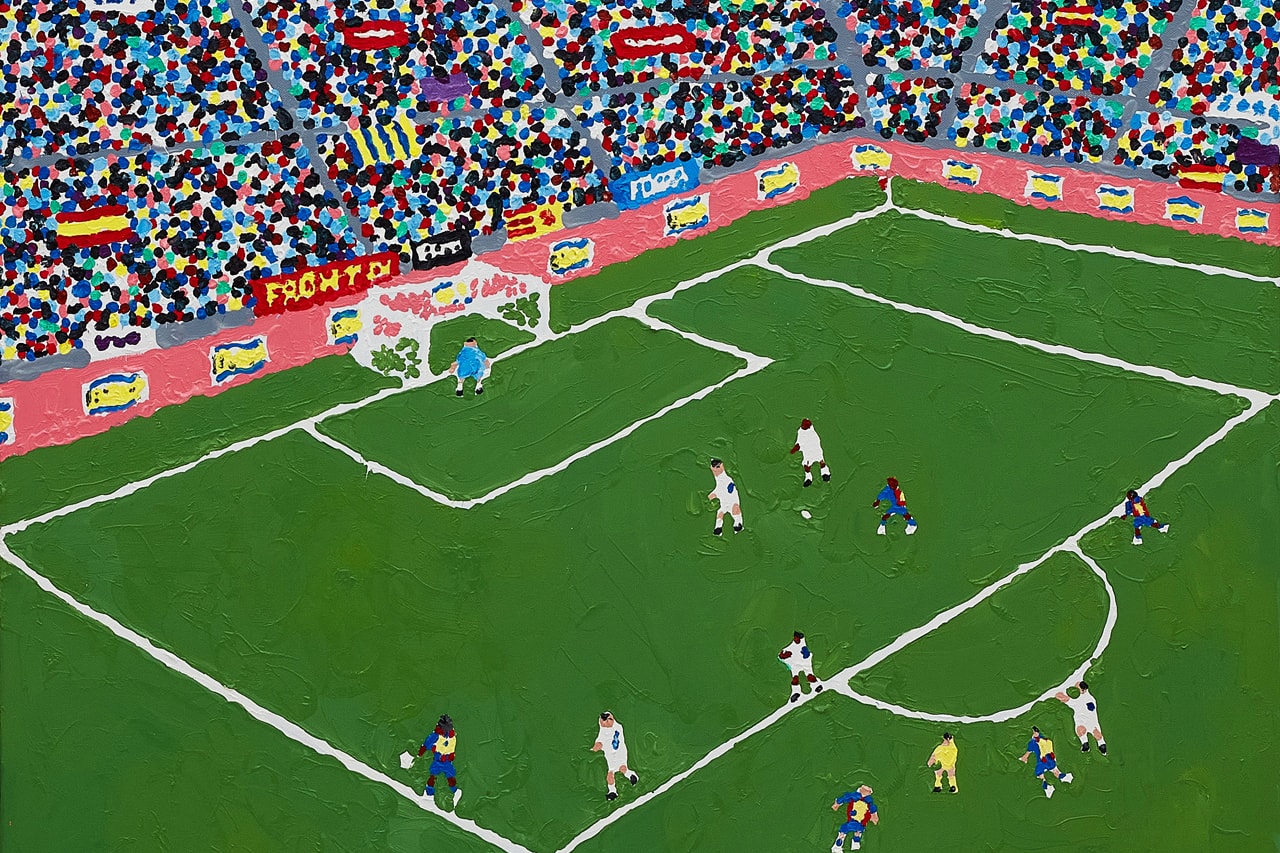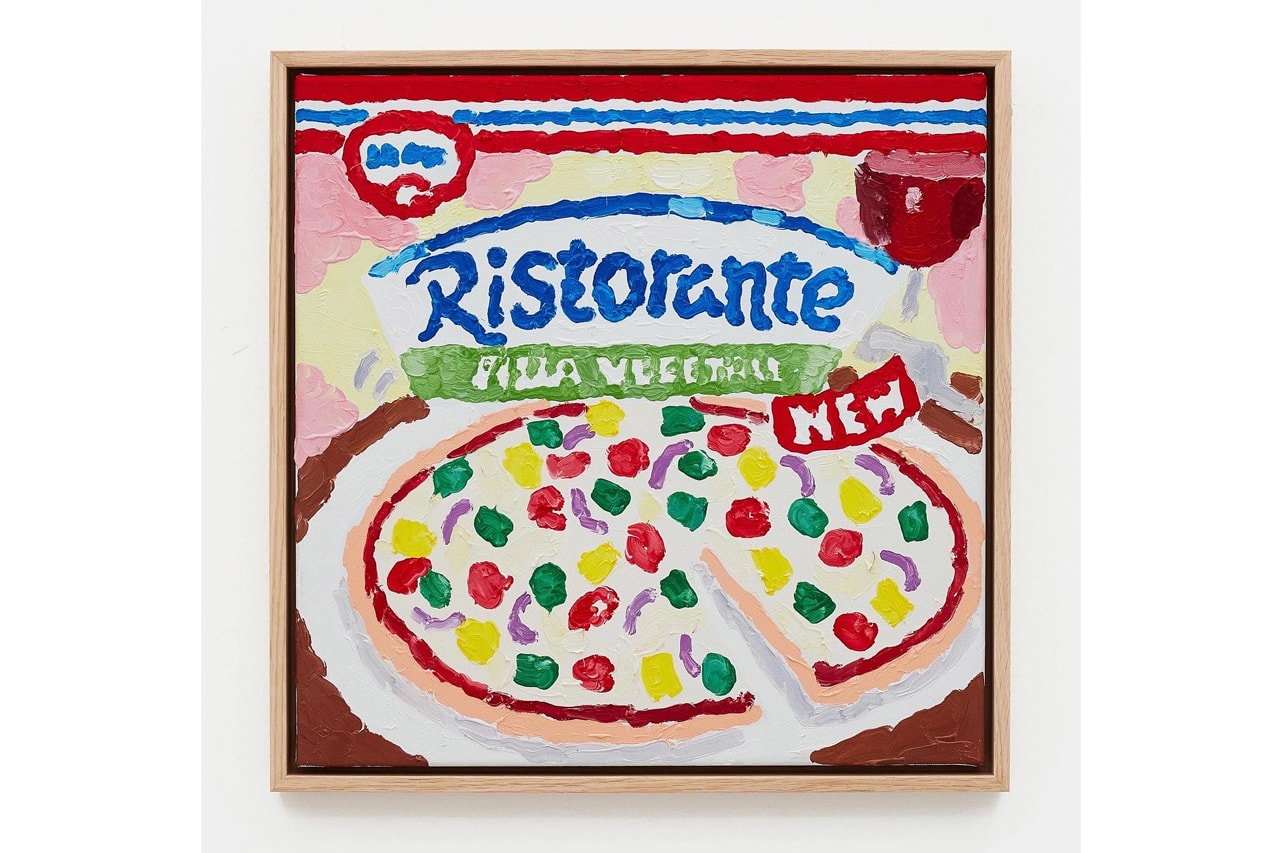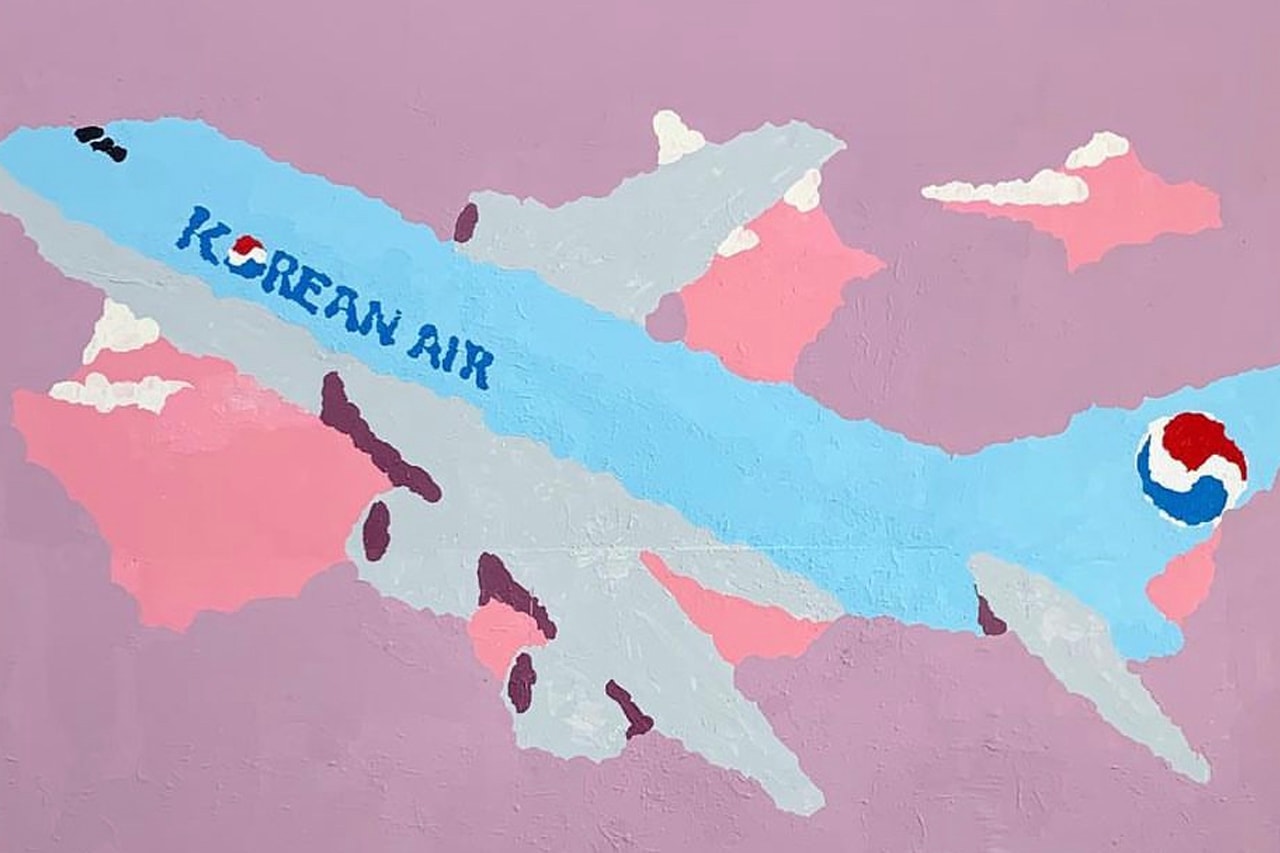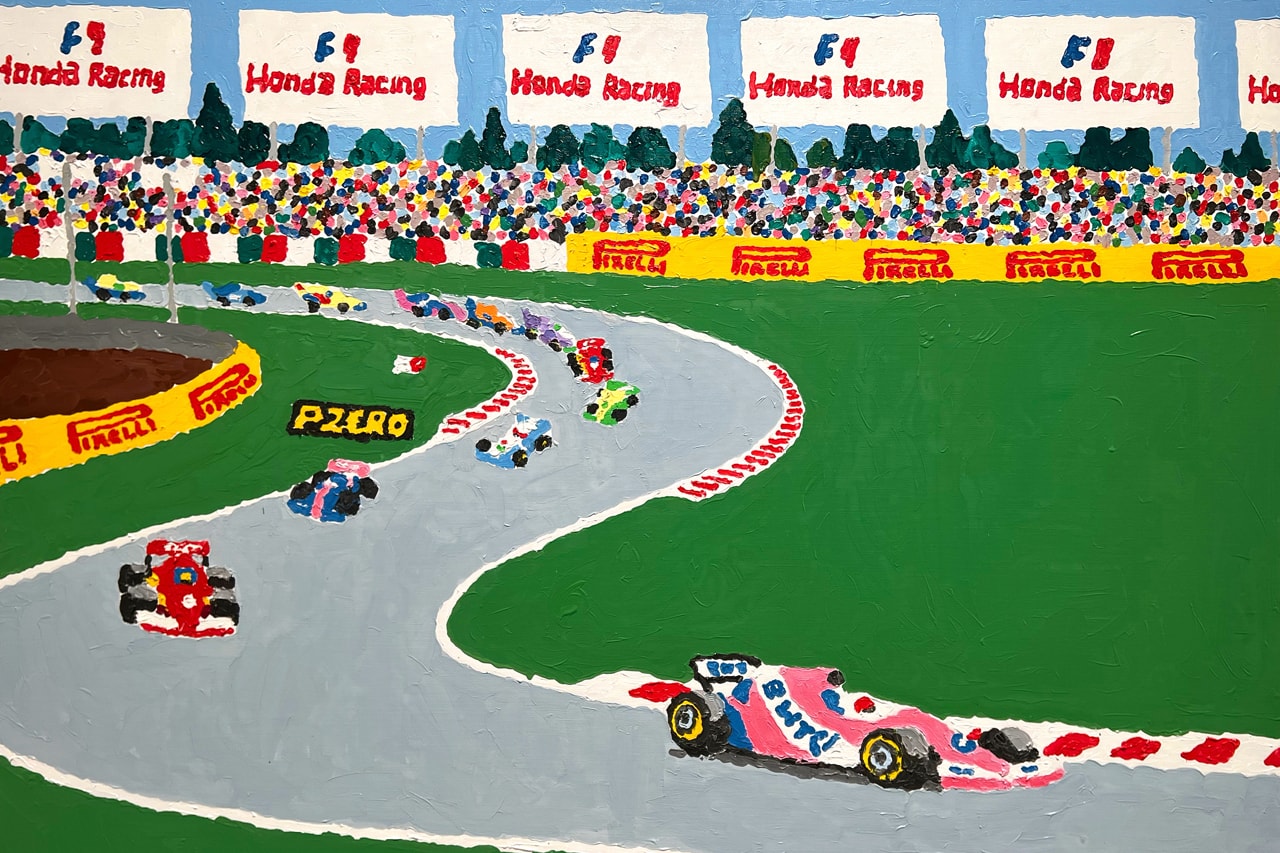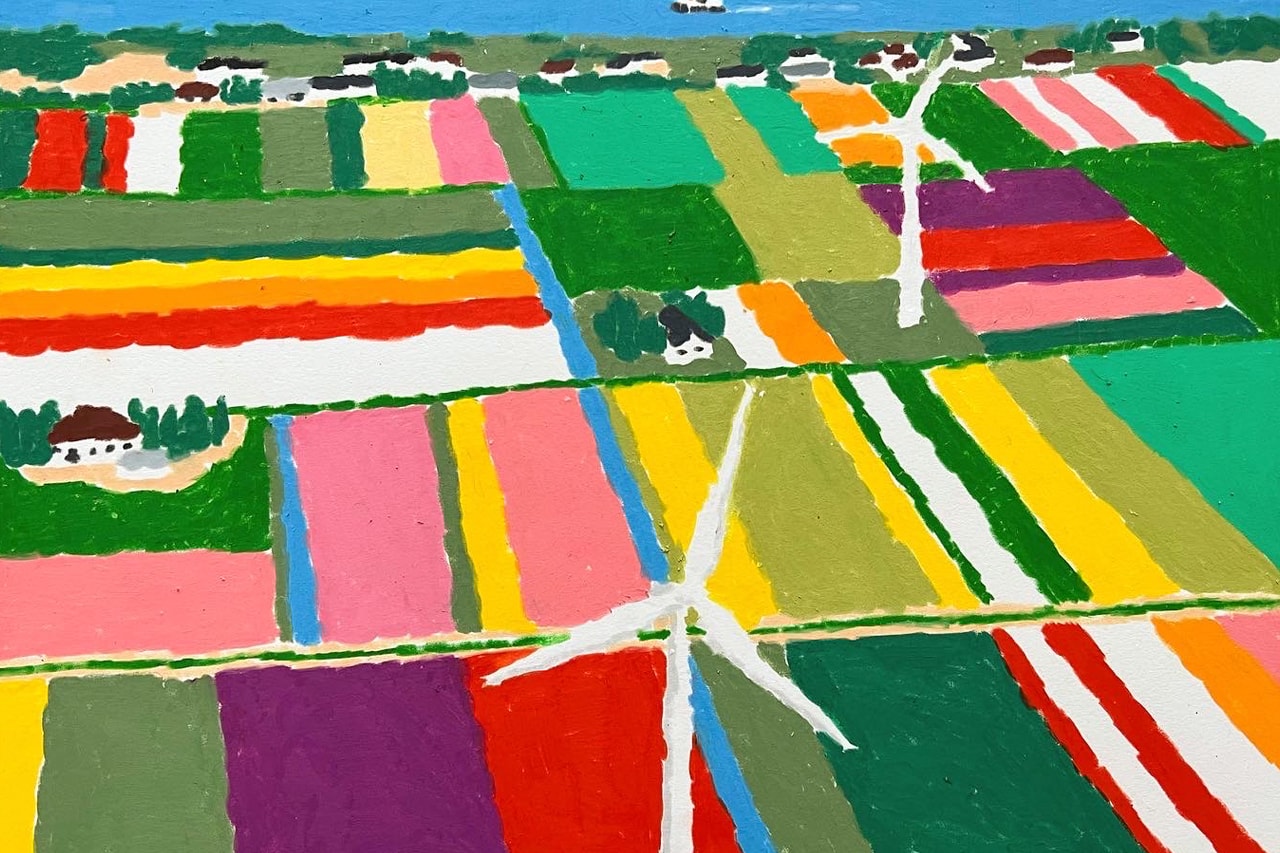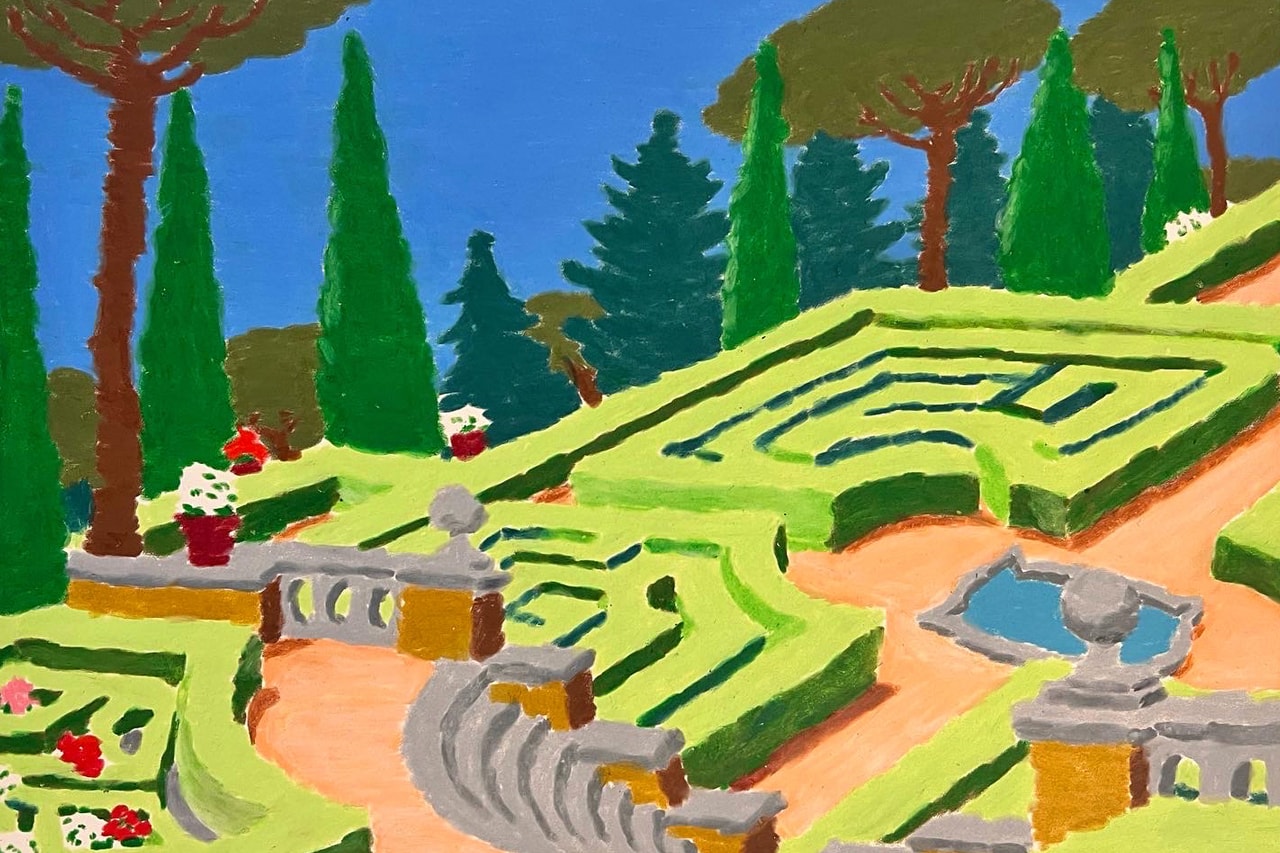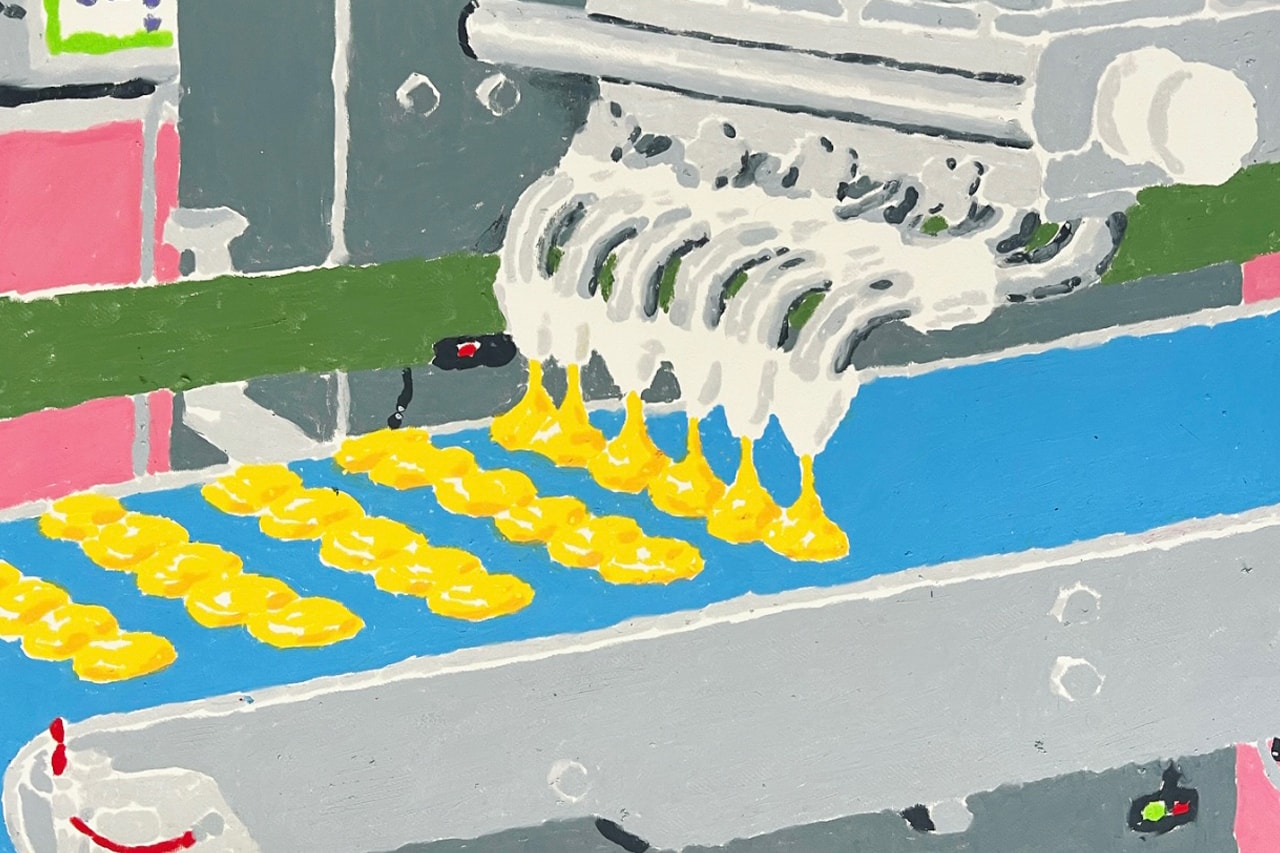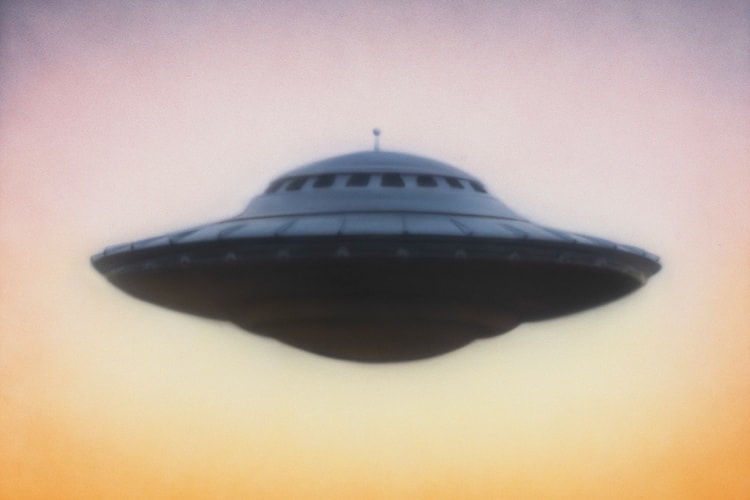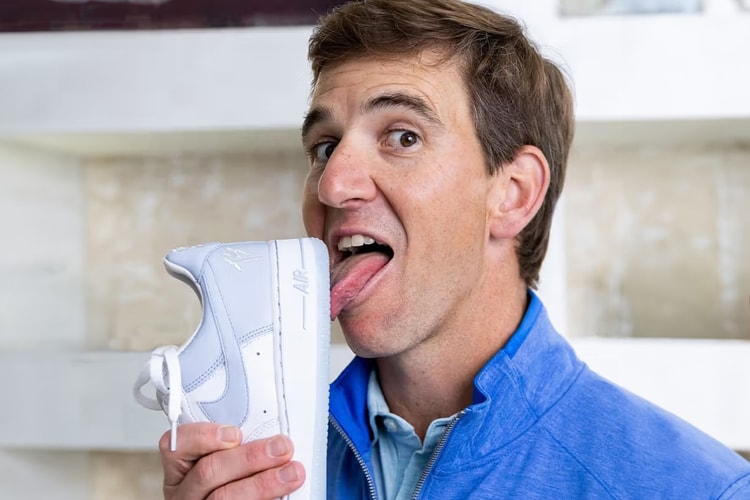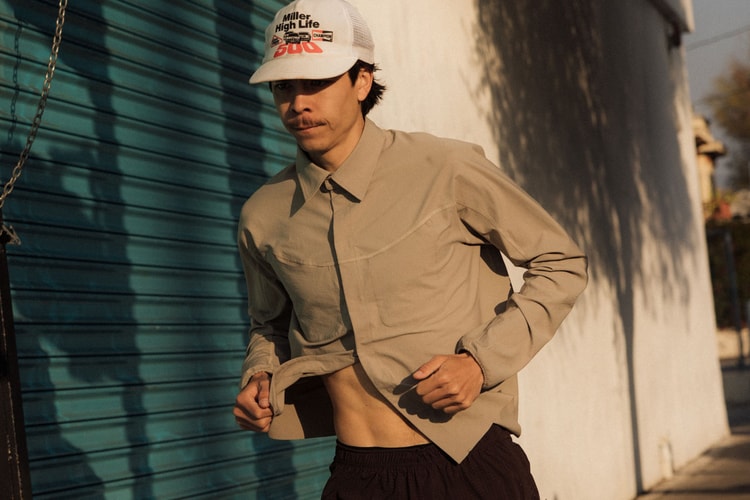

A gas station and an aristocratic garden are aesthetically worlds apart, but in the paintings of Danish artist Luca Bjørnsten, the two share an equal level of beauty. Based in Copenhagen, Bjørnsten is known for creating pungent compositions that evoke the vibrancy of his youth rummaging through comic books and candy wrappers, as well as capturing in thick applications of paint, his memories strolling through supermarkets and the European countryside.
Regardless of the subject matter, Bjørnsten believes that you can achieve the same level of appreciation in any object or landscape by simply repainting it endlessly, pouring the same level of attention and care as one of his idols, the Italian painter and printmaker, Giorgio Morandi, once did with his still lifes. Working across oils and acrylics, primarily oil pastels, the childlike surface of Bjørnsten’s paintings mask the deeper commentary he makes on how consumerism is continually reshaping the landscape, along with the relationships between people, places and products.
Each of Bjørnsten’s paintings is “a declaration of love,” the artist tells Hypeart, “but it’s also a way for me to document the contemporary landscape, or at least my time on this planet. It’s also about trying to understand or isolate the oddness of human nature and the world we have created around us.” His latest exhibition, SUPERMARCHÉ at Paris’ JPS Gallery, spotlighted the sea of overlooked colors and graphics that populate any supermarket, corner store or bodega. From milk cartons to multi-purpose cleaner sprays, Bjørnsten’s goal was to “confront the viewer with the essence of consumerism, in a manner that disrupts its commonly held negative assumptions,” he says. “In my own ironic way, the SUPERMARCHÉ installation encourages us to reconsider supermarkets’ role in contemporary society, and the boundless possibilities art can offer. Most importantly, it’s a love story.”
For the latest Pen & Paper, Hypeart spoke with Bjørnsten, also primarily known by many as Nuggetbrain via IG, to discuss his latest series and the underlying messages that underpin his work.
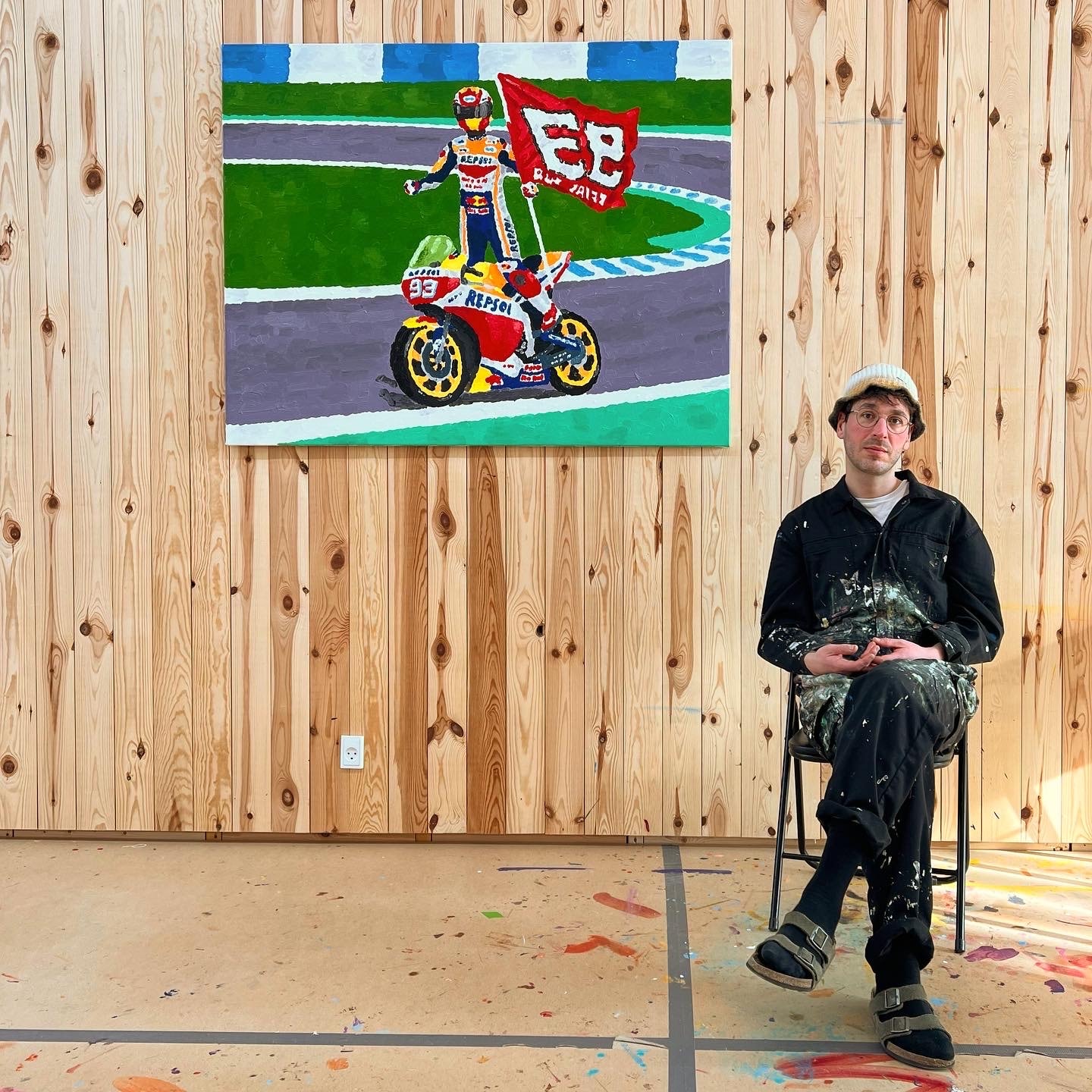
“The landscape is changing so rapidly now, it’s hard to imagine what the world will look like in the future.”
Where did the name Nuggetbrain come from for your IG handle?
Funny story. Back when I created an Instagram account, I didn’t really think about the name I picked. At the time I just posted random stuff, like my friends doing silly things and how tall I could build a sandwich. Slowly I started posting my work, which got reposted and tagged, and then the name just stuck with me. I was like: “Well, I guess my name is Nugget Brain now.” It’s funny because a lot of people don’t know my real name. The director of one of the galleries I work with, told me a while ago that he had a collector who came in, asking for a painting by Nugget Brain. I love that.
How about your earliest days making art… which figures or periods had the biggest impact on you growing up?
As a kid, I was obsessed with comics and cartoons. That’s definitely where it all started, and in many ways, it’s still a big part of what I do. The vibrancy of colors, simplicity and humor — a witty play on “reality”. It’s all there to this day. But I remember when my mom brought me to the Guggenheim in New York when I was around 12. One thing that caught my eye was a painting by Magritte. In fact, it was the iconic Ceci n’est pas une pipe (1929), and I remember staring at it, high on candy in my baggy skater clothes.
Back then, I didn’t really understand the world of oil paintings and sculptures, it was all a bit too dull and ancient looking. But there was something about Magritte’s work, probably a cartoonish element I could connect with, and that sort of opened the doors to the world of art in a more classical sense. Around that time, I was also very much into graffiti, so my early work became some kind of hybrid between all of that. Later on, I discovered artists like Philip Guston, the Bay Area Figurative Movement, such as Richard Diebenkorn, as well as futurist artists like Giacomo Balla, photographer Martin Parr and probably the most influential of all, Giorgio Morandi. You can learn so much about painting from studying his work. His attention to details, light and composition is absolutely amazing. However, what I realized from studying his work, is that you can paint the same objects or sceneries for all eternity. It all comes down to the attention you give it.
Wax and oil pastel are one of your choice mediums, and definitely one of the most unforgiving. Why this method and what effect do you believe it has that other forms of paint lack?
I think it stems from drawing throughout my childhood and adolescence. Drawing is in my DNA, it’s so direct and intuitive to me. Wax and oil pastel correspond with my oil paintings, it embodies a painterly quality, yet the act of using this medium is basically drawing. However, it’s actually an interesting question. The years after my BFA I worked as a film editor for some years. Throughout, I always had a guilty conscience about not proceeding with my art, and I was quite in doubt where my place in life should be.
Afterwards, I started painting again, but I was overwhelmed with all the possibilities and all the different mediums. One day I bought six or seven oil pastels and the limitations in the palette really corresponded with my OCD. If the grass is green, then the trees must be yellow, because I don’t have another green. It reminds me of old 16-bit gaming consoles. There’s a limited amount of information you can add to the picture, yet it has its own completely unique and beautiful logic. The limitation and clumsiness that the pastels provided me with became a kind of blueprint for how to make oil paintings. I love the freedom it gives me. I can bring it anywhere. Bringing oil paint outside would completely stress me out.
Your scenes range everything from a Parisian bridge, a soccer game to an aisle of all-purpose cleaning sprays. How do you go about picking the subjects you aim to depict?
I’m a very traditional artist. I make landscapes and still lifes, yet the landscape around us has changed from the scene once created by many of the classical artists. In fact, the landscape is changing so rapidly now, it’s hard to imagine what the world will look like in the future. Will all the gas stations alongside the highways still be here in 10 to 20 years time? I do have a genuine attraction to everything I portray. It always implies a declaration of love, but it’s also a way for me to document the contemporary landscape, or at least my time on this planet. It’s also about trying to understand or isolate the oddness of human nature and the world we have created around us.
Most people probably don’t find an aisle of all-purpose cleaning sprays noteworthy. It’s so mundane, and just serves a practical function. Get in and get the hell out. But if you look at it for long enough, there’s a lovely composition of shapes and colors, and perhaps a challenge lies somewhere within that. Can I translate this into a painting that either I or other people will find interesting? By doing so, we might rekindle a fascination or experience something that we have overlooked or forgotten. Simultaneously, when the familiar has become so familiar, we don’t really acknowledge it. If highlighted or shown in a different light, the familiar can become unfamiliar. Reality turns into something unreal.
Most of what I create is in one way or another product oriented, but how or why differs, depending on the subject matter. In the case of a Parisian bridge, it really refers to the romanticized idea of these iconic tourist attractions. There’s a pre-perceived excitement and joy surrounding these sites, something I find a bit humorous and silly, even though I can surely appreciate the beauty and the engineering behind it. Obviously, these structures carry much history, and a strong cultural heritage, but along the way they’ve also transposed into empty shells of themselves, along with the mass-produced postcards, selfie-sticks waved around, keychains, magnets, umbrellas, t-shirts, or an Eiffel tower waffle. I think my fascination truly lies here. Our cultural history is important, but what the hell is going on?
“The goal is to confront the viewer with the essence of consumerism, in a manner that disrupts its commonly held negative assumptions.”
What is your process like from earliest idea to final execution?
A major part of my practice consists of researching. I spend days on end, searching the internet for something that might tick my curiosity. Over the years, I’ve created a vast archive of pictures I’ve taken myself, or found somewhere online, in a magazine, on a postcard, basically from wherever I drag my body around. Usually, I have an idea of what I’m looking for. It’s just on the tip of my tongue, but I need a reference — an anchor for my slightly hazy idea to blossom. When an image starts to take shape in my mind, I often debate with myself, whether or not it’s interesting enough or whether it’s too tacky.
Occasionally this process drags out, I get restless and decide not to overthink it. Generally, my work evolves from a collage of different images, but every time I work, I’ll restrain myself from looking at my references, and let abstraction and intuition run free. I’ve always admired people who can work on different paintings at the same time. I simply can’t do that. When I start something, I have to finish it before moving on or else I get confused or lose interest. But I suppose I work quite fast, as I can finish a large painting in one intense day, working from early morning into the night, if all my preparation is on point.
When you think about the art you’ve created in the recent past, do you have a favorite? Why?
Nothing really specific comes to mind, but I know when I’m repeating or boring myself, and then it’s time to move on. I think my best work is created when I’m trying out something risky. Something that could either be genius or dumb. I’ve always thought that a lot of great art is like a really good pop song. Most pop songs all sound the same, but every now and then something comes along where you think, “this is actually quite genius”. It might be the same chords and instruments as any other pop song, but there’s an odd simple twist. It was there in front of you the whole time, you just didn’t know it.
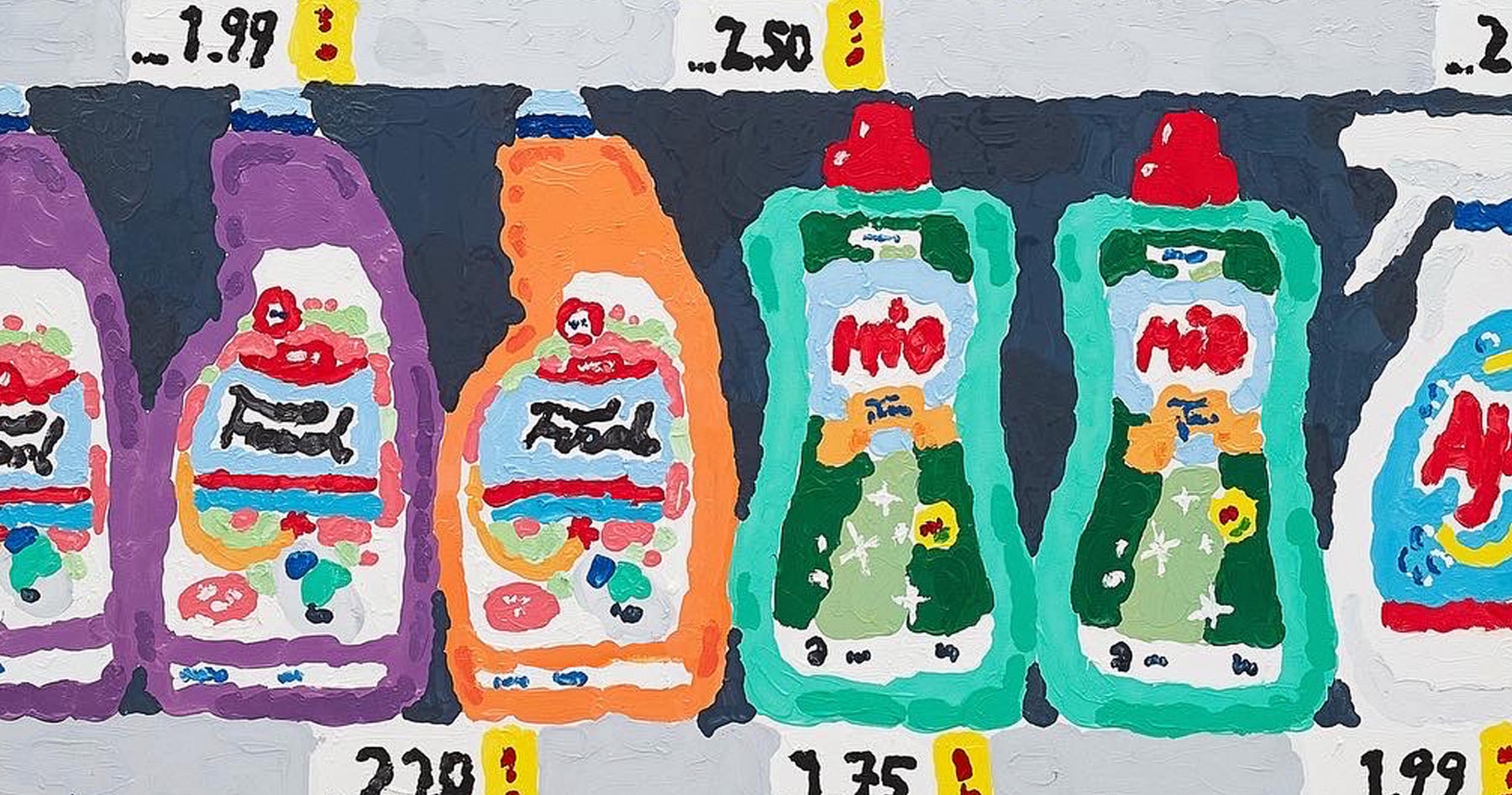
Can you talk about your ongoing solo show SUPERMARCHÉ and the themes you spoke about in it?
Supermarkets have been an ongoing theme in my work, an innate attraction that keeps me coming back for a creative sweet deal. The current show is curated by the director of JPS Gallery, whom also have gallery spaces in Hong Kong, Tokyo, Paris and Barcelona. It’s been a great pleasure working with the gallery, as we created a space to bounce ideas around, and find a way to push my work into new types of installations.
Initially the show premiered at SWAB Art Fair in Barcelona back in October, but a decision was made to tour with the show, by moving the entire installation to their gallery space in Paris. The goal is to confront the viewer with the essence of consumerism, in a manner that disrupts its commonly held negative assumptions. In my own ironic way, the SUPERMARCHÉ installation encourages us to reconsider supermarkets’ role in contemporary society, and the boundless possibilities art can offer. Most importantly, it’s a love story.
Is there a new medium you’re looking to explore that you haven’t in the past?
Yes, and I hope I’ll find time to play around with it sometime soon. The medium is basically papier-mâché, but there’s a twist. That’s all I can say for now, because I have no idea if it will actually work out.
When you need to switch your mind off or find inspiration to overcome creative block, where do you turn?
When I get stuck, it’s often during my research, but research is also my way out. It’s a bit of a paradox. If I’m lucky, I’ll find a way out by scrolling through my archive. If not, it’s always interesting to see what other people are up to. I spend a lot of time looking at art in general, but a new idea might as well come from strolling around in a hardware store. If I need to switch off completely, I’ll hang out with friends, watch tv, or stare blankly at a wall.
What are some new projects we can look forward to in 2024?
I have a few fairs and projects lined up, but the next big thing is a solo show in May at Albert Contemporary in Denmark. Furthermore, some very exciting stuff with JPS Gallery, but we haven’t set any dates yet, so that’s to be announced at a later stage.
All artwork courtesy of Luca Bjørnsten for Hypeart.




